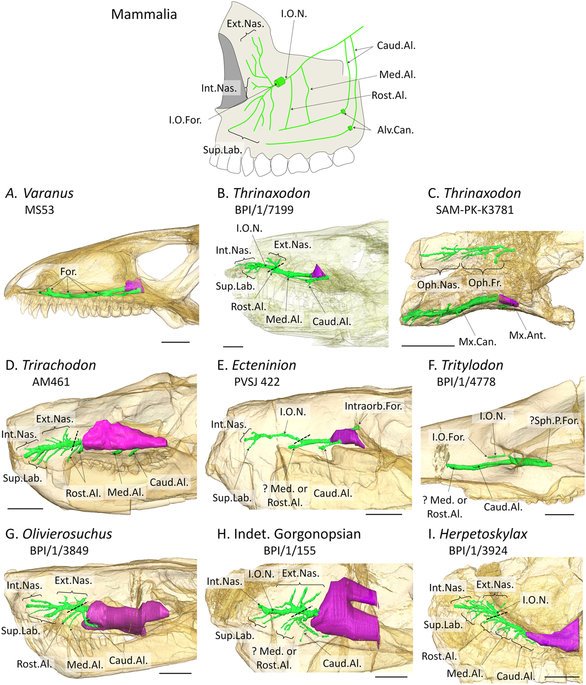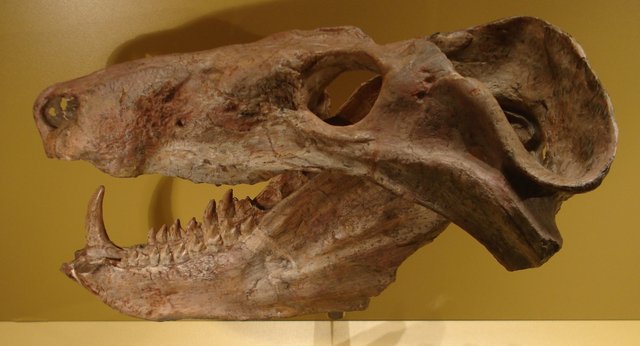Transition Fossils - Part 4… Cynodonts
The transition from Reptiles to Mammals is less clear cut because things like hair and lactating don’t easily leave a fossil record. We also have plenty of fossils and the transition is very gradual over many millions of years.
We do have plenty of fossils bone structures that start to resemble mammals more and more – the mammal like reptiles. Some of the things that are most noticeable are the teeth.
We start to see the emergence of differentiated teeth eventually till we have the sets we are very familiar with, incisors, canines, molars etc.
Hair is far more enigmatic.
There is fossilized dung that appears to contain hair that’s older than 250 million years and that’s also when we see pits in upper jaws etc. that would be consistent with whiskers.
However, those pits by themselves are not conclusive.
Now that we can CT scan fossils to get a better look at what’s going on inside them it is more conclusive that the nerve structures are consistent with whiskers.

We find these in fossils where the species were most likely to be nocturnal and living in burrows underground.
Whiskers are great for feeling around in the dark.
The most exciting evidence emerging lately is Genetic and has to do with homeogene Msx2.
This gene is associated with not only the loss of the third eye but also relates to dermatology, hair and lactation, which after all is just modified sweat glands.
For further reading: I link the following Nature article… It’s technical but a great read if you really want to delve into the latest detail regarding mammalian transition.

Very interesting. Followed.
very nice gavvet... i'm really interested in this kind of articles....very nice!!
Whiskers seem like a natural evolutionary process. The question remaining is why didn't all nocturnal mammals acquire them eventually.
I can't think of too many that don't have whiskers, which ones do you have in mind?
Whiskers are however managed by a different set of genes than basic body hair.
I'm thinking the Aardvark, maybe Anteaters, wombats?
I've been really enjoying these fossil posts @gavvet. I hope you will continue writing about this stuff for the foreseeable future, the meshing of ancient history and science is fun to learn more about.